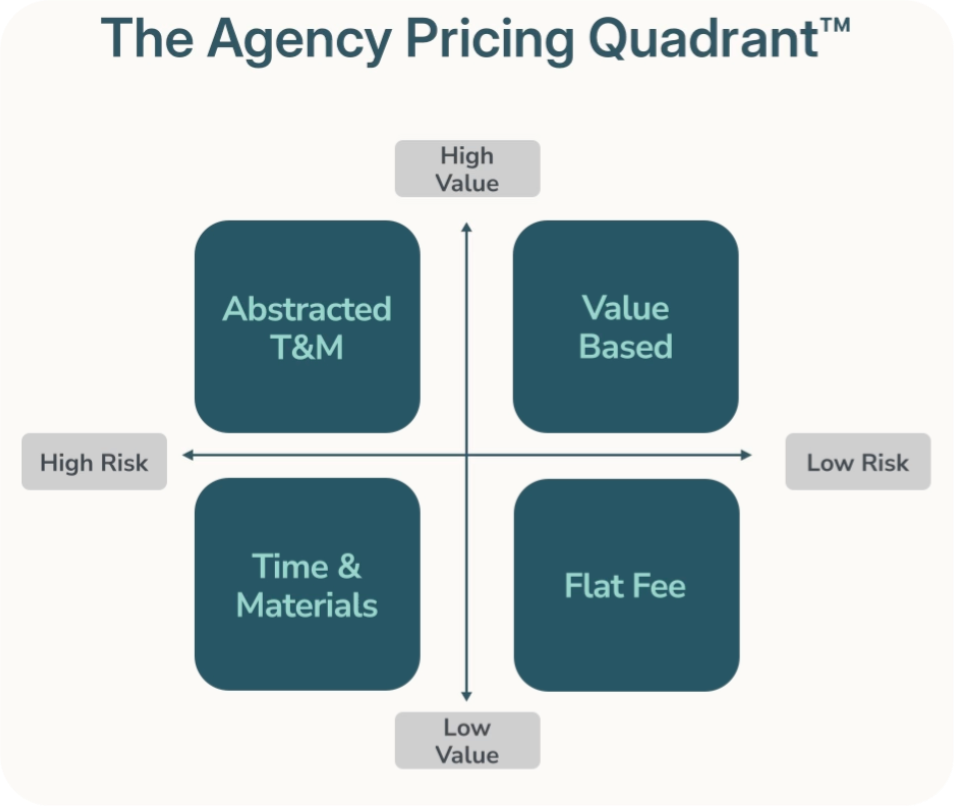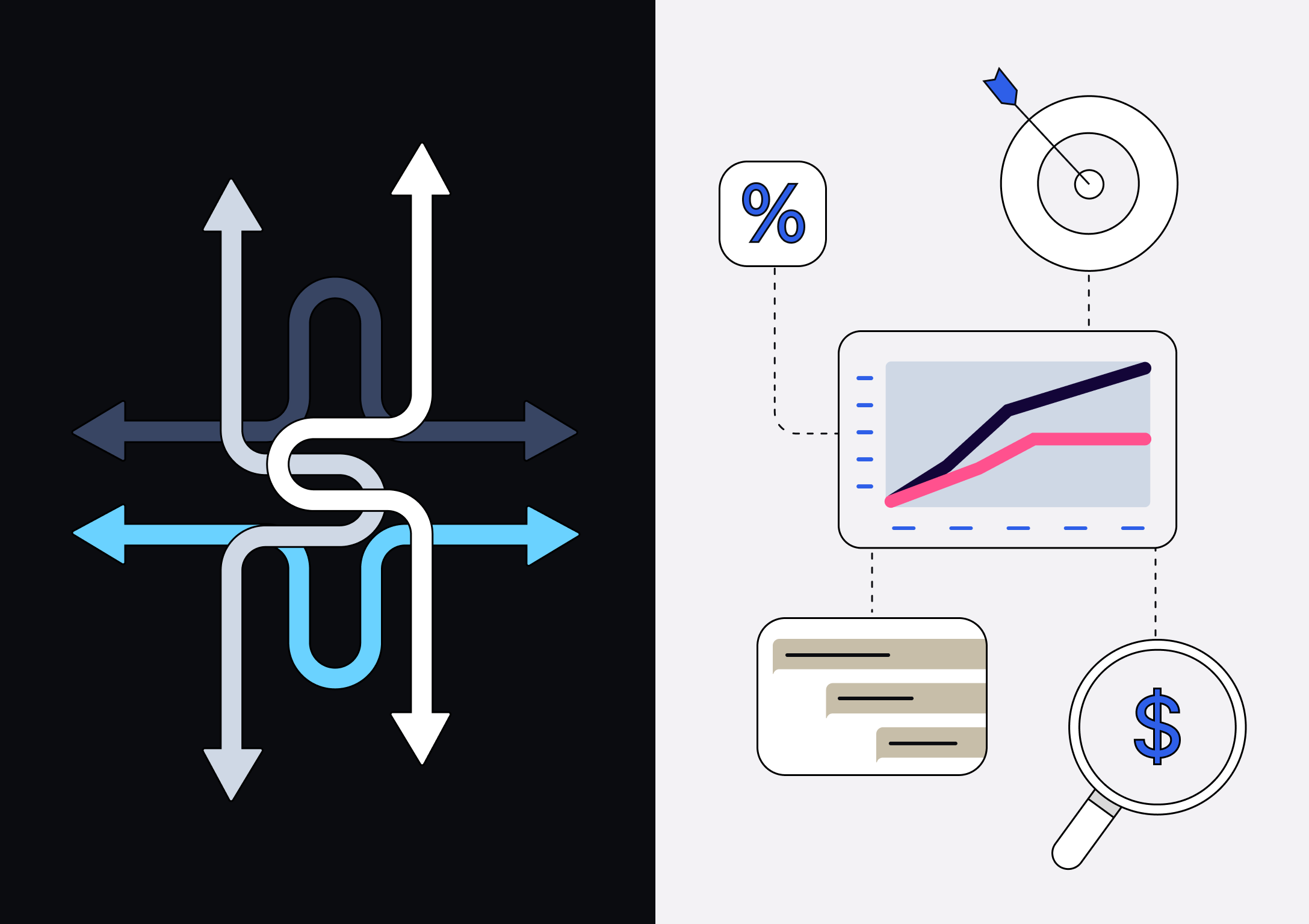In June 2025, a Credit Karma study revealed that nearly half of Americans budget based on ‘vibes’, focusing less on their actual financial situation and more on how the economy feels.
This emotional approach to finances isn’t unique to individuals: businesses do it, too. Agencies will often estimate and cost projects based on gut feel or past guesses, under-charging and under-estimating, then feeling all the ‘yikes’ of an unprofitable project when it’s far too late.
Nobody intentionally chooses to go with vibes and guesstimates when pricing a project—but you may end up defaulting to both when:
- You find determining the cost of the work difficult because you lack clear visibility into scope, team availability, and delivery costs
- You’re under pressure to send a quote before mapping the required work
- You’re building plans based on ‘who’s free’ instead of ‘who’s best’
- You really want to win the project, even if it’s doomed to be unprofitable from the start
So what can you do instead? For a start…
1. Let go of vibes and understand your model
Marcel Petitpas, profitability expert and CEO of Parakeeto, thinks “it’s shocking how often there isn’t math behind pricing: just vibes, and vibe pricing.” As a starting point, he recommends getting clarity on what the right pricing model for your agency even is, based on the Pricing Quadrant below:

The quadrant maps projects along two dimensions. Risk refers to predictability: low-risk work lets you accurately estimate costs within 10% of the total. In contrast, high-risk work involves more unpredictability and might need significant changes as you go. Value combines your agency’s market positioning (crowded category versus strong differentiation) with the project’s impact on your client’s bottom line.
Based on these variables, you can match your position on the quadrant to a clear pricing model.
2. Calculate true costs & set clear margins
Once you have a model in mind, you need the actual numbers to make it profitable.
To get the figures, calculate the cost of delivering the project, including salaries, overhead, and contractor fees. Then choose a margin that is sustainable for your business. Petitpas recommends “setting yourself up for a direct delivery margin of at least 70%.” For example, if a project costs you $30 per hour, you’d need to charge the client $100 for a 70% margin. This price ensures you can cover expenses and contingencies while still maintaining healthy profits.
Now: that calculation is straightforward in theory, though in reality, it can be complex and headache-inducing. You have to balance clarifying the project scope and timelines, finding the right people (and how much their time costs), all while considering constraints like budget caps and resourcing across global offices. On top of that, you might be switching across different tools to get all this information.
<tip>
Price projects confidently with Float
Shameless Float plug 🫣: maybe it’s time to try out our Estimates feature, now in beta. You can estimate the cost of work based on the reality of your resourcing, quote your client the right price, and monitor the profitability impacts as you’re doing it. That’s neither about vibes nor about guessing: it’s just math coupled with a centralized source of truth for your team.
</tip>
3. Refine your pricing
Your initial estimates are just the starting point; you need to consistently review them to determine whether they really align with the project’s costs.
Petitpas suggests gathering data to determine whether the project stayed within budget: “Start comparing estimated versus actual hours at the role level. With this, you can build useful datasets that will help you have the right conversations about how to correct estimation and process issues that create discrepancies between estimated and actual hours.”
Once you have these datasets, you need a process to analyze them. For example, the Operations team at Flight Story (the studio behind Diary of a CEO) gathers data from Float around costs and timelines after running a project, then reviews it to answer four questions: How did it go? What did we do well? What could we do better? Did something go critically wrong?
Based on these insights, they can identify patterns, like consistently underestimating design time or missing scope creep, and adjust future estimates and pricing accordingly. You can (and should) do the same.
Final thoughts: don’t go with the vibes
The next time you’re tempted to guesstimate, remember that vibe pricing might feel easier in the moment, but systematic pricing keeps your agency profitable in the long run.
I’ll leave you with a final pro tip: when you arrive at the right price, you might be tempted to undersell to win the work. That resistance you feel is natural, but giving in all the time could harm your margins and the whole business in the long run. Petitpas suggests being truthful about what the work will require and then discussing how to fit it to your client’s budget. For example, you could reduce the scope, phase the project, or adjust the deliverables to meet their budget.
Yes, some prospects will walk away—but they weren’t going to be profitable for you anyway.
<hr>
All the As to your profitability Qs 💰

How do you price your services, keep a healthy margin, and make both your teams and your clients happy? Marcel Petitpas from Parakeeto answers the most common questions around pricing and profitability in this 13-minute Q&A packed with insight and the occasional spicy take.
We couldn’t have written this without:













